So what do candles and joints (aka “doobies”) have in common with baseboard electric resistance heating and heat pumps? Read on Macduff[1]…
Over the years I have been in countless buildings that experienced discoloration of carpeting due to particulate accumulation (Photograph 1). I have also observed particulate deposits on window blinds, inside of kitchen cabinets and on appliance surfaces (microwave ovens and refrigerators). Additionally, I have seen lots of "ghosting" of framing members on the interior gypsum board surfaces of exterior walls. Yes, of course, more with steel studs…but also with wood studs. Yup, wood (Photograph 2).
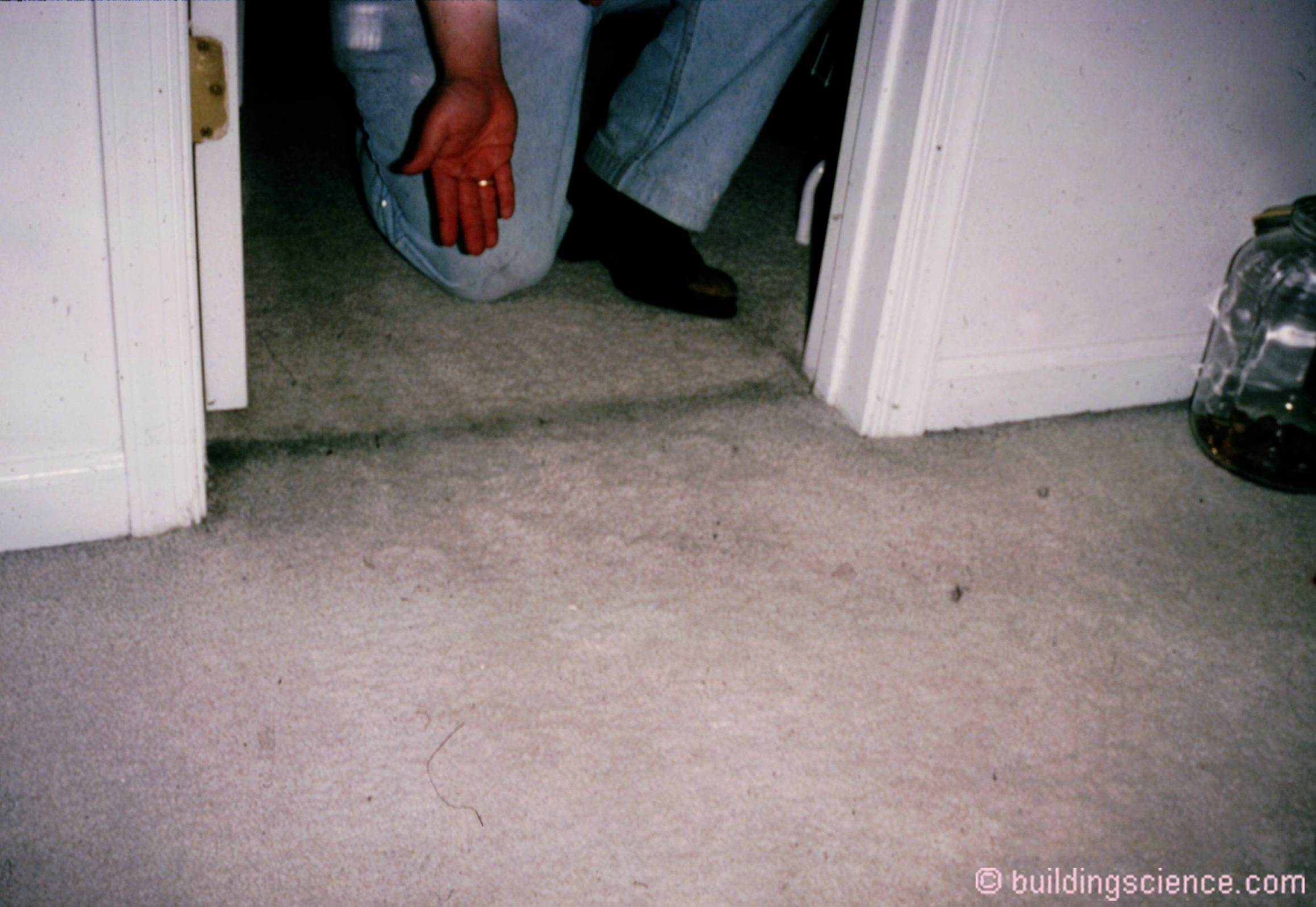
Photograph 1: Carpet as a Filter- Discoloration of carpeting due to particulate accumulation.
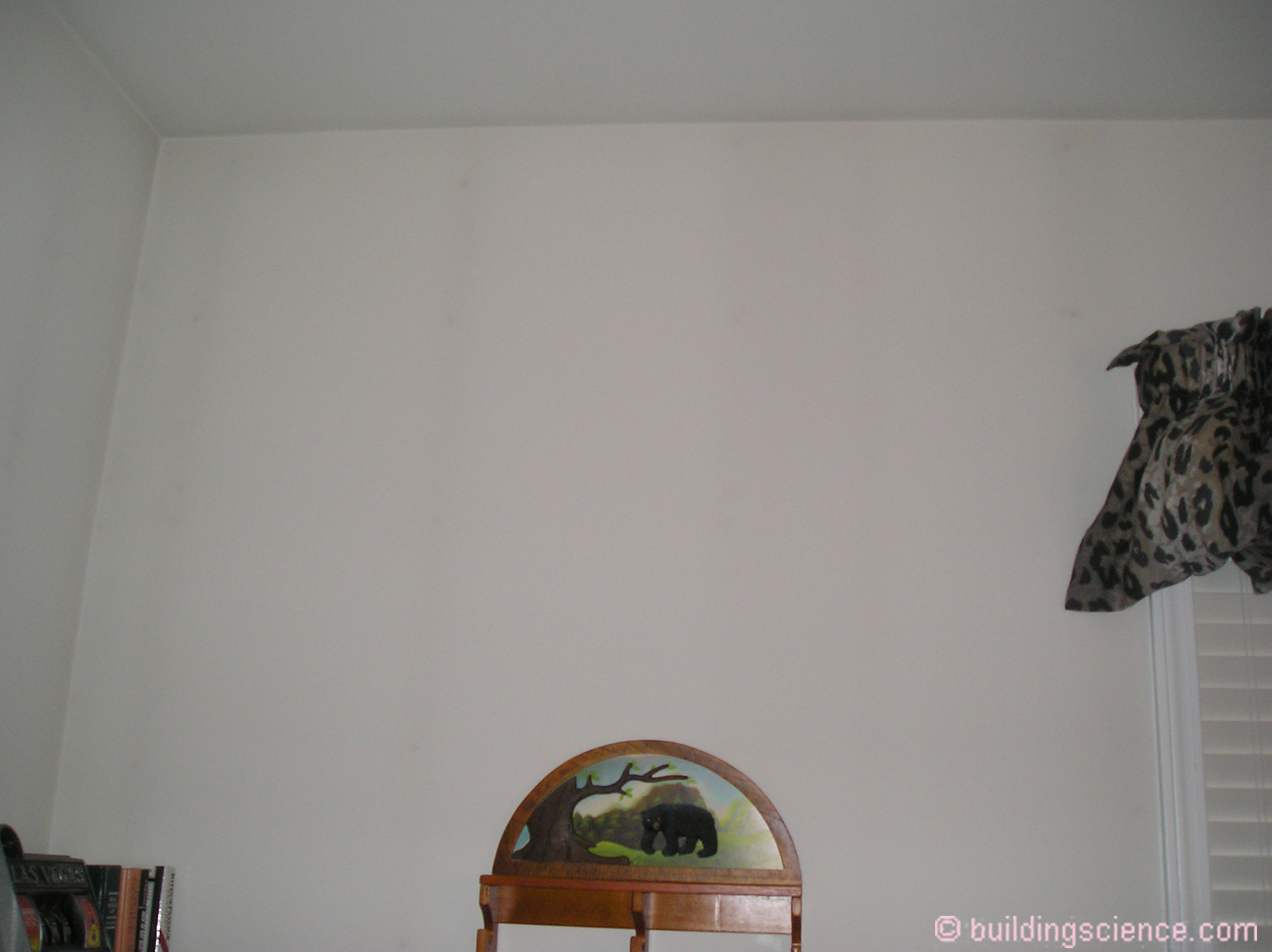
Photograph 2: Brownian Motion- "Ghosting" of framing members on the interior gypsum board surfaces of exterior walls.
It used to be smokers that caused all the problems….we solved that by banning smoking in buildings and throwing them outside to face Mother Nature’s furies.
We had a relapse with candles…especially the scented/aromatic ones…ah, ambience and decoration (Photograph 3). Who would have thought that those candles could cause so much damage and generate so much soot? A wonderful “bench top” experiment by an old school engineer[2] shows the amount of soot from a 30 minute candle burn (Photograph 4).
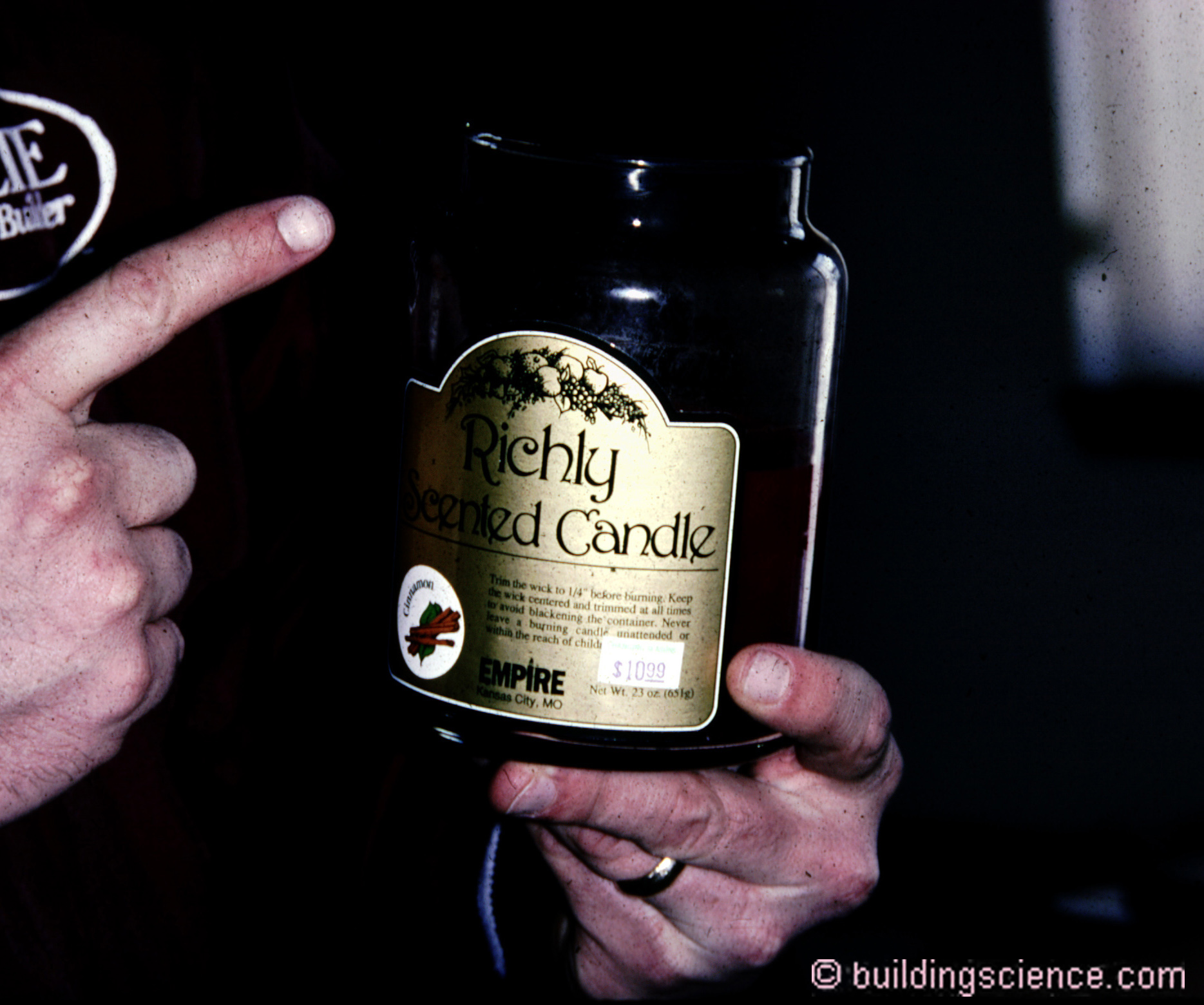
Photograph 3: Candles– Problems with candles…especially the scented/aromatic ones…ah, ambience and decoration.

Photograph 4: Environmental Chamber Test- Who would have thought that candles could cause so much damage and generate so much soot. A wonderful “bench top” experiment by an old school engineer shows the amount of soot from a 30 minute candle burn.
The issue kind of went away…for a while…and now is back…with heat pumps. Huh? Time to set things up a bit so sit back and read on.
The problems of particulate accumulation and deposition all share similar characteristics. The only big differences are the sources of the particles.
The problems are related to four deposition mechanisms: filtration, electrostatic attraction, thermal deposition due to Brownian motion and impaction. These deposition mechanisms cause tiny microscopic airborne particles to:
- “filter out” in carpets
- “plate out” on charged surfaces due to electrostatic attraction
- “plate out” on cold surfaces due to “Brownian motion”
- “plate out” on surfaces due to impaction
All of these mechanisms require really tiny particles - particles that can become aerosolized or lofted into the air and remain airborne for many minutes or hours. Big particles are not related to the problems observed. Big particles fall out of the air too fast - their movement and distribution are dominated by gravity rather than airflow, electrostatics or molecular movement such as Brownian motion. The particle sources for the types of really tiny particles that can cause the problems observed are many:
- tobacco smoke, cannabis smoke
- candle soot
- fireplace smoke
- soot from standing pilot lights on gas fireplaces (Photograph 5)
- carpet fiber pyrolysis on hot heat exchange surfaces such as electric resistance baseboard heaters and resistance heating elements in heat pumps
- blown insulation pyrolysis on hot heat exchange surfaces such as electric resistance baseboard heaters and resistance heating elements in heat pumps
- aerosolized clay, concrete cutting particulates and gypsum sanding
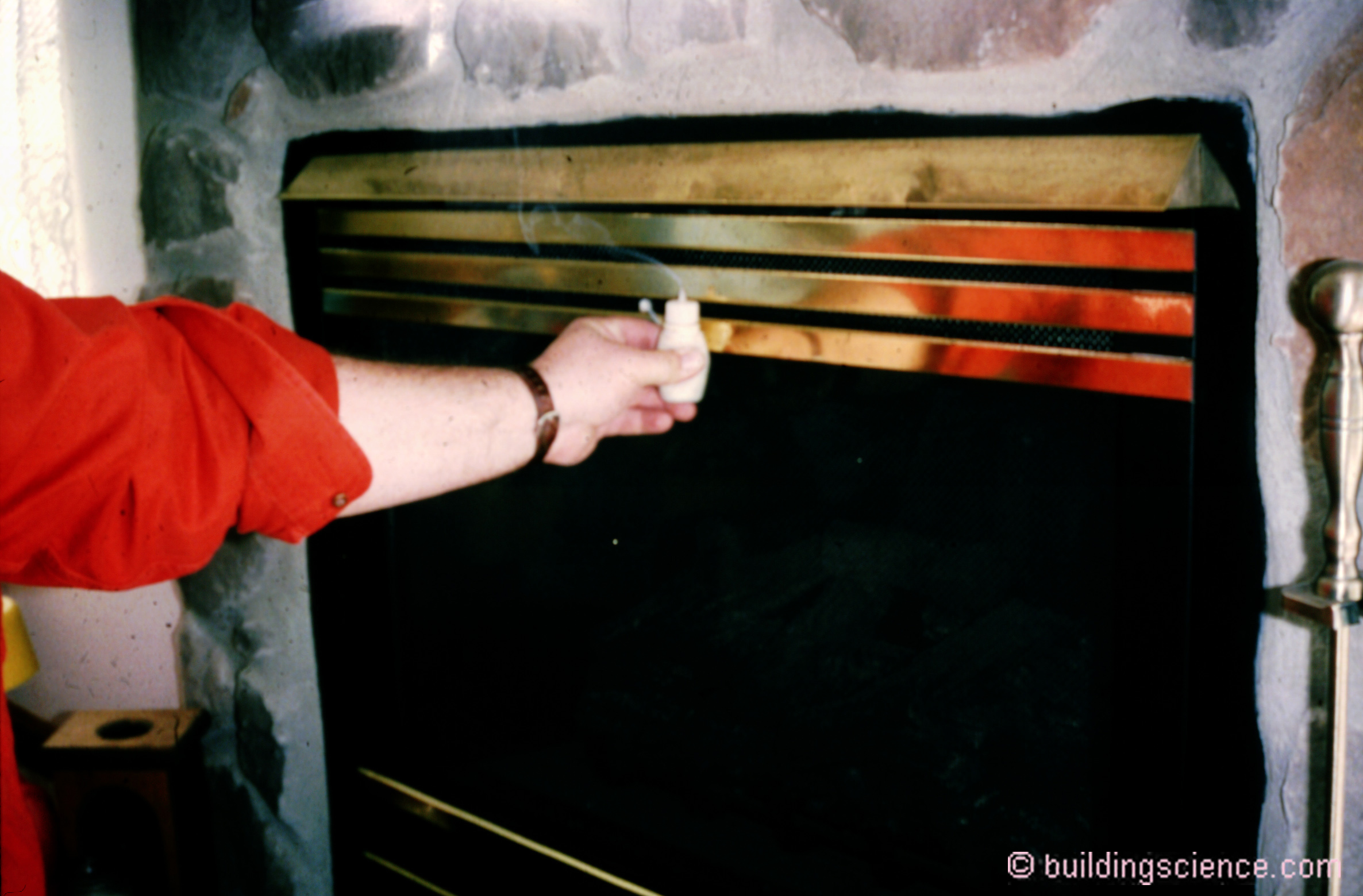
Photograph 5: Backdrafting Gas Fireplace- Soot from standing pilot lights on gas fireplaces are a big source of particulates. When the full burners are on venting occurs. When only the pilot light is on backdrafting is common.
Aside from really tiny dirt, concrete cutting and gypsum sanding most of these sources have something in common - something has to get burned, cooked, fried or pyrolyzed in order to create the size of particles required. There are a few other potential sources of particles that could provide them in the size range necessary. However, we typically dismiss them as not likely for obvious reasons: particles from industrial grinding or cutting operations, fumes from welding and carbon black from copiers or laser printers. Of course it is possible that someone has unusual habits we don't know about or an unusual lifestyle that we don't notice. Just the same we don't typically notice any welding or industrial grinding going on inside the typical unit. We also don't often notice a Kinko's-like business in most units. Ongoing renovations to interior gypsum surfaces do happen on occasion.
Brownian Motion
The oldest known deposition mechanism will be described first - Brownian motion. A long dead English botanist (yes, botanist not physicist), R. Brown, noticed tiny particles behave much like molecules with respect to vibration. Under the kinetic theory of gases, molecular vibrations are directly related to temperature. The higher the temperature the greater the molecular vibration. Brown observed that tiny particles in fluids get jostled or bounced around depending on temperature. The higher the temperature, the greater the jostling or movement of the tiny particles. He believed that the vibration of molecules in the fluid bounced the particles around. He was correct and became famous - hence the term Brownian motion. Okay, so far this is an interesting story, but how does this relate to our problem?
Well, air is a fluid and particles in air get jostled around based on the temperature of the air. When air with all of these bouncing particles brushes against the interior of an exterior wall it gets cooled. Not all of the air gets cooled, only the air right against the interior surface of the exterior wall. We call this layer of air the boundary layer. Now it gets a little complicated. Not all of the air in this boundary layer cools at the same rate. Some spots are colder than others. Where there is higher heat loss such as at a wood framing member, say a 2x4, the air in the boundary layer right at this spot is colder than the air in the boundary layer just inches away. Well, the air doesn't bounce around as much in these cold spots which means the tiny particles in the air at these cold spots also don't bounce around very much. If the particles are not bouncing around very energetically, it is easier for them to get stuck to the surface of the wall. The particles in the air next to the wall tend to "plate out" on colder surfaces. Since every stud is a "thermal bridge" the outlines of the studs can be sometimes seen due to the accumulation of tiny particles at the cold spots. This is often called ghosting and was very common in the old days, before MTV, even before Ozzie and Harriet. It was common back then because we typically had poorly insulated walls (real cold spots) and lots of people that smoked. The smokers supplied the particulates. The tobacco particulates plated out on the cold spots, usually at the studs due to Brownian motion. Those of us in New England and old enough to remember the days of coal, oil and gaslights and all the associated markings. OK, nobody’s old enough to remember gaslights.
Why doesn't this particular phenomenon happen as much today? Two reasons: our houses are better insulated – continuous exterior insulation makes thermal bridging go away and there are fewer smokers – inside anyway. Fewer people smoke inside and those that do typically accept the fact that smoking not only causes their house to smell but smoking also makes their house dirtier due to the tobacco particles plating out on cold surfaces. We point this out since many units I have seen problems in contain heavy smokers and the problems in those units are usually due to tobacco particulates. Don't smoke inside and your white walls won't go brown, nor will your light colored carpets discolor - same for your blinds. You should accept the consequences when you live in an ashtray. Folks caught on. Then cannabis came. We have to go through the same education process again.
Electrostatic Attraction
Another well-known deposition mechanism is electrostatic attraction. When tiny particulates become electrically charged they will become attracted to other electrically charged surfaces. The particulates can become charged due to many reasons. Friction and proximity to electrical and magnetic fields are some of the most common. Us old school engineers loved electrostatic filtration on furnaces and air conditioners….they charged these bastard particles big time and created deposition paradise inside. Plastic surfaces and surfaces that contain electrical equipment also become easily charged. The particulate depositions observed on window blinds, inside of kitchen cabinets and on appliance surfaces (microwave ovens, and refrigerators) are due to electrostatic attraction.
I just love health fads…especially the dumb ones…. Remember home ionizers? They create…wait for it…electrically charged particles. Folks purchased ion machines for health reasons and got dirty walls. Home ion machines cause particles to become charged and plate out on surfaces. The air is clean, but your walls are not.
Impaction
Impaction occurs when moving air carrying tiny particulates flings or throws the particulates against a surface. This typically happens when air moves under a door due to an air pressure difference. As the air rushes under a closed door it has to "bend" under the door. When air in the middle of the room (height-wise) has to go under a door, it moves downward. The particulates in the moving air have their own momentum (as do the air molecules). The air makes the curve and bends under the door, but the particulates don't they travel in more or less a straight line and end up hitting the carpet directly under the door leaving a dark line. Go back and look at Photograph 1 again. So why does the air want go down under the door? Ah, you all know why….the pressure difference between bedrooms and common areas (Figure 1).
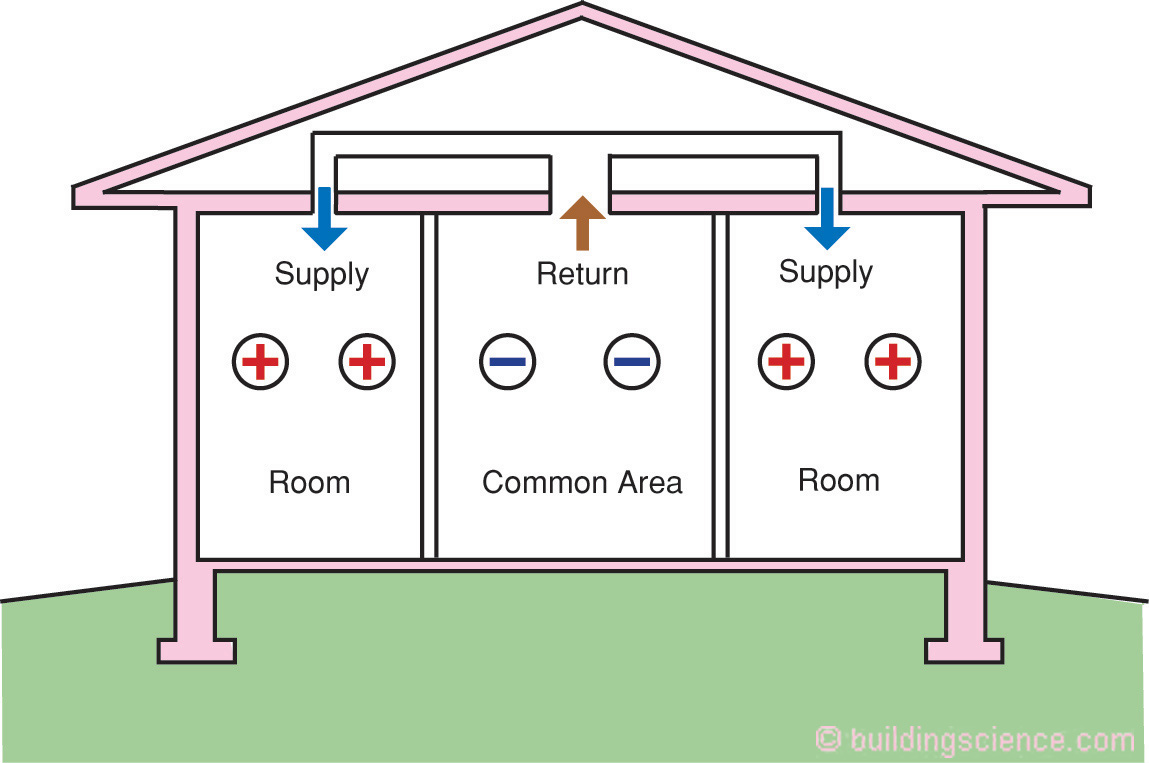
Figure 1: HVAC System Pressures– Typical pressure difference between bedrooms and common areas in houses with forced air distribution systems.
Filtration
The last deposition mechanism, and the most common, is the filtering of particulates by carpeting. When air flows through a carpet the carpet acts like a filter and removes particles from the air that passes through it.
Air moves under baseboards in exterior and interior walls due to air pressure differences caused by wind, temperature differences and the operation of heating and air conditioning systems. As the air moves under baseboards, the carpet at these air pathway locations becomes discolored if the air contains particulates.
The Big Picture
Most of the deposition typically observed is carpet filtration. The carpet filtration issue is one of the most common complaints from homeowners. Why is this now such a big issue? Why didn't we have the problem before? We've had carpets for a long time and the air pressure differences are also not new. So what is different? Simple:
- we have more of the right-sized particulates
- we have lighter colored carpets
- we have consumers with higher expectations
We are not about to argue against light-colored carpets or argue against consumers with higher expectations. However, let’s talk about the particulates. I estimate (a Joe wag.) that in the typical home we experience a 10 fold increase in the quantity of indoor microscopic particulates in the less than 10 micron range principally due to cooking, candle smoke and electric resistance heating elements.
Electric resistance baseboard heaters are often respirable particle generators (Photograph 6). Guess what? We are seeing more and more heat pumps. What is in every heat pump? Ah, electric resistance heating elements that kick in when the heat pump no longer can do its thing. Guess what comes off those heating elements…because filters are so good…. Have a good look at Photograph 7. That smiling guy is Chuk Bowles who predicted all of this 30 years ago. It is good to have legends as friends…thank you Ron Bailey and Chuk Bowles…
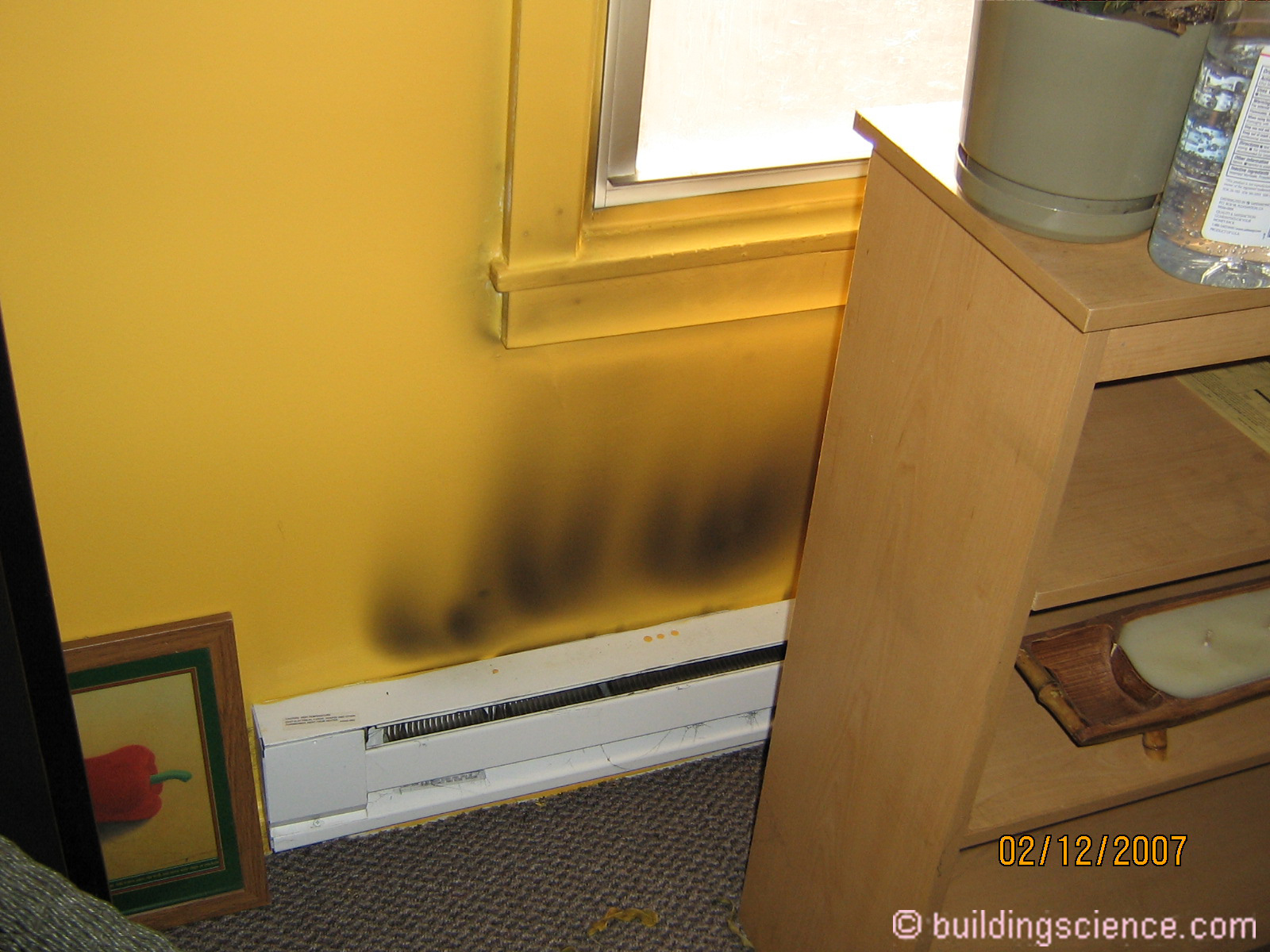
Photograph 6: Electric Resistance Baseboard Heaters– What a mess… an energy efficient respirable particle generator.
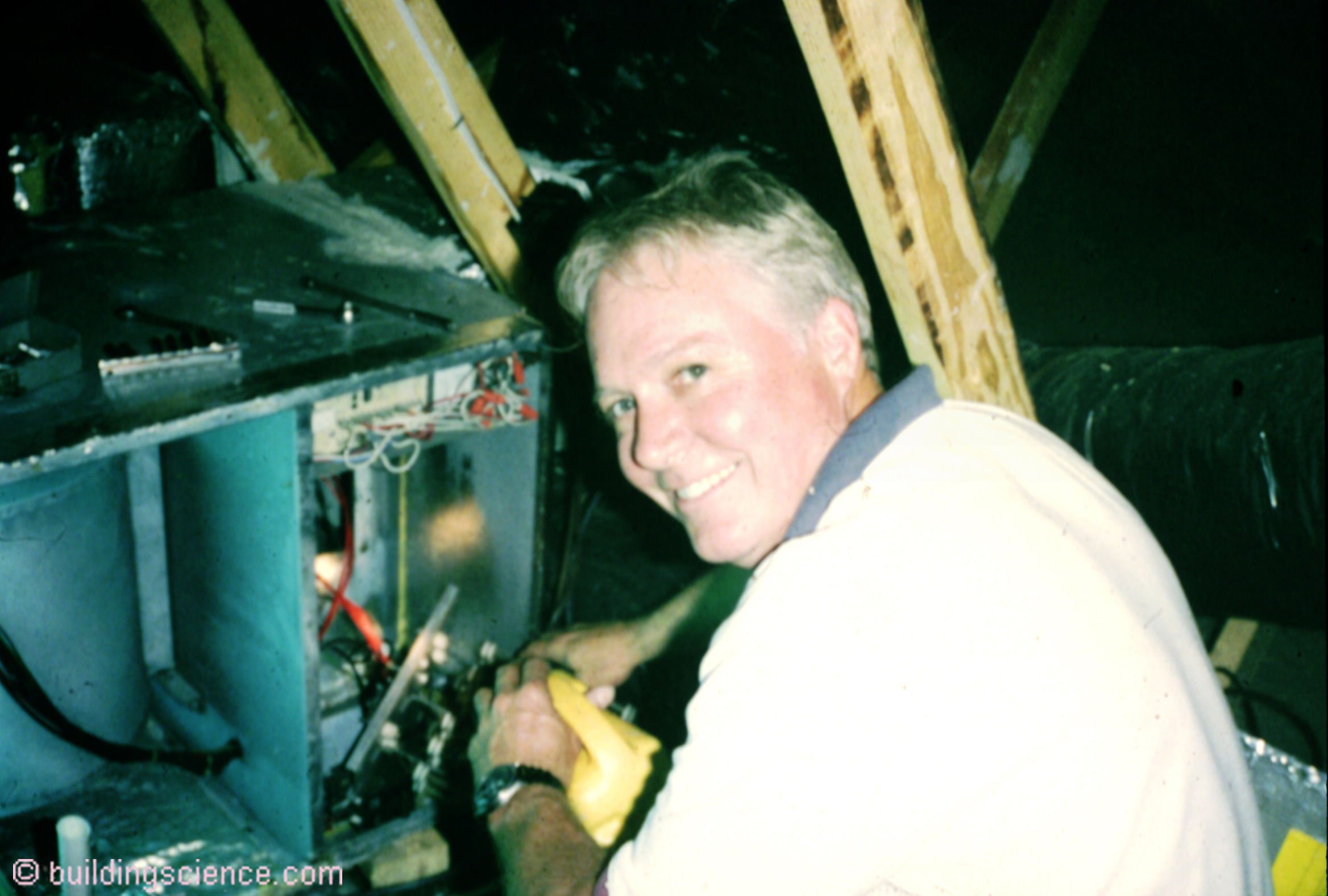
Photograph 7: Smiling Guy- Chuk Bowles cleaning the key surfaces in an air handling unit 30 years ago. Good to be correct, eh?
[1] Apologies to Shakespeare and Haggard…the correct quote from Macbeth is “Lay on, Macduff”. “Lead on Macduff” comes from King Solomon’s Mines and H.R. Haggard.
[2] The legendary Ron Bailey…from Florida…I remember sitting across a table from him in a bar in Tampa way back when asking him about all of the ghosting and carpet discoloration I was seeing…I asked him directly “What do you think?”…he immediately responded right back “What do you think?” We both laughed and agreed to write our answer on a bar napkin and exchange napkins. We did and then immediately both burst out laughing. We both pegged candles….which at the time seemed like a crazy thing. Ron, being Ron goes out and builds a plywood environmental chamber and the rest is history….
